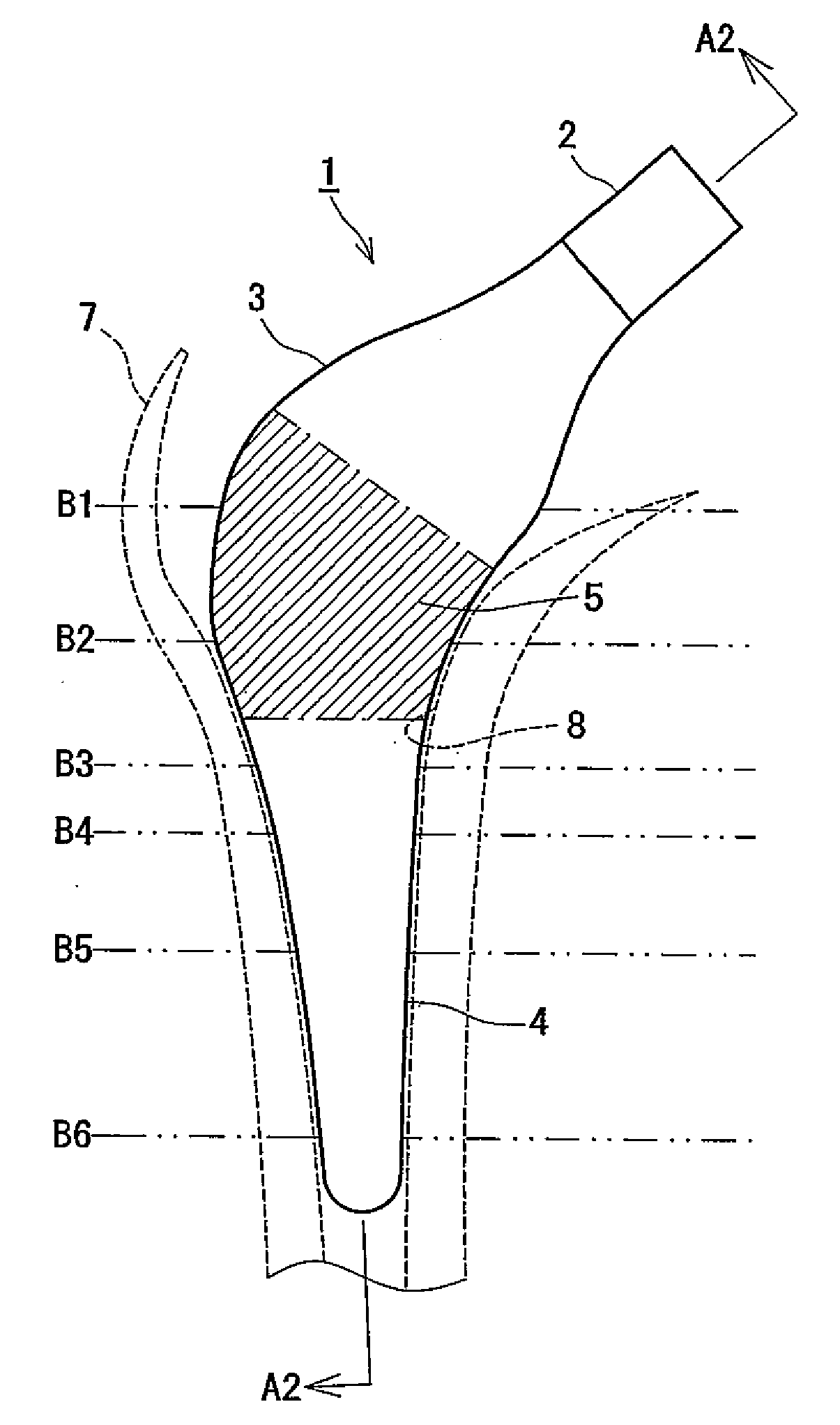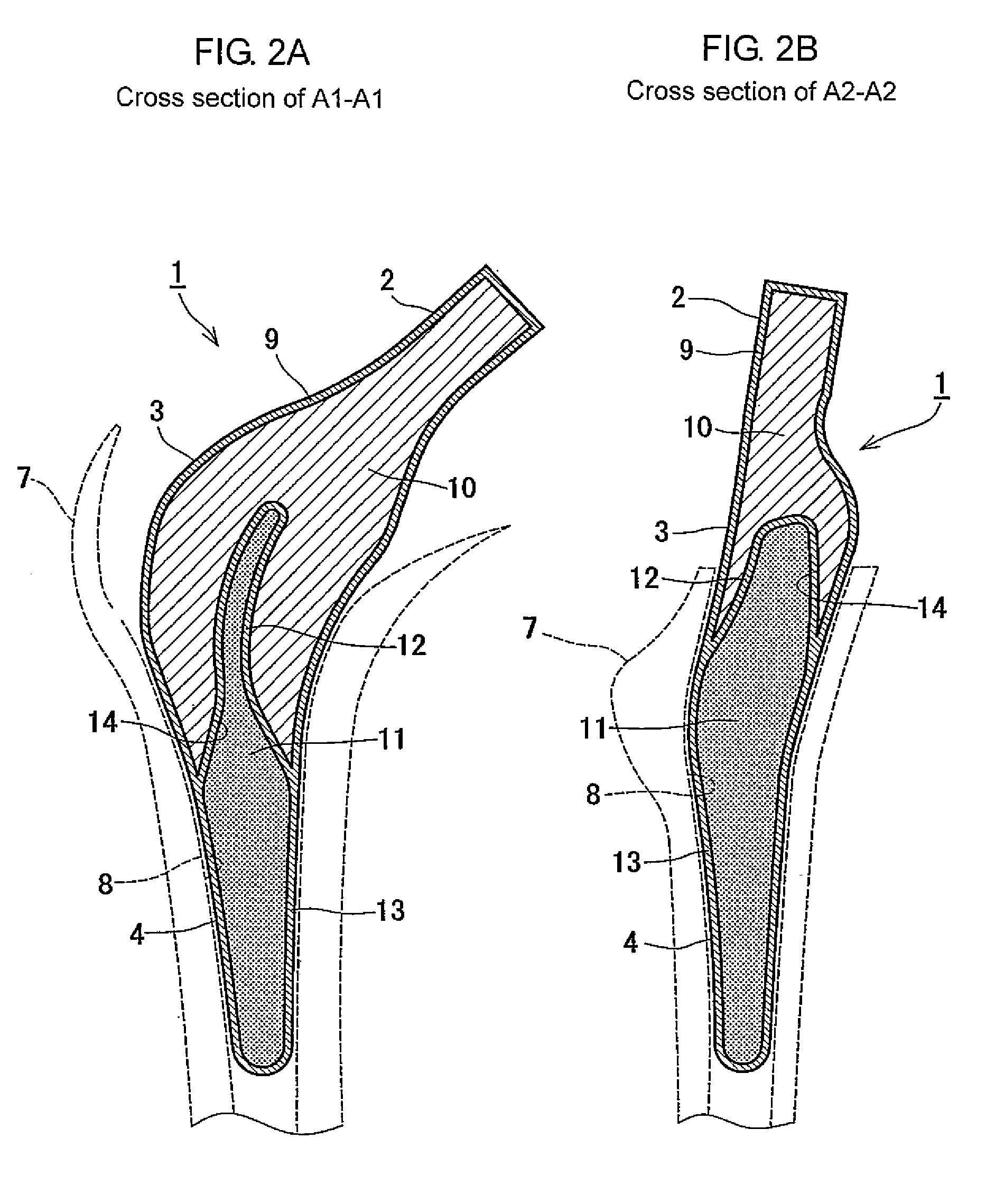Method of Designing and Manufacturing Artificial Joint Stem with Use of Composite Material
a composite material and joint stem technology, applied in the field of designing and manufacturing the artificial joint stem with the use of composite materials, can solve the problems of unreacted monomer resin components which are not polymerized, harmful effects on the human body, and affecting the life of youth with a long life expectancy, so as to prevent mistakes, reduce costs, and be made in a short period of time
- Summary
- Abstract
- Description
- Claims
- Application Information
AI Technical Summary
Benefits of technology
Problems solved by technology
Method used
Image
Examples
Embodiment Construction
[0114]Below, the preferred embodiments are illustrated in details based on the FIGS. 1-9. FIG. 1A is a front view of the artificial joint stem manufactured with the use of the method of designing and manufacturing the artificial joint stem using the composite material in the invention, and FIG. 1B is its side view thereof. FIG. 2A is the section view taken along the line A1-A1 of FIG. 1, and FIG. 2B is the section view taken along the line A2-A2 of FIG. 1. FIG. 3 is a set of cross section views of B1-B6 in FIG. 1 at the respective height that is cut in each level perpendicular to the axes. FIG. 4A is a cross section view showing the enlarged structure of the surface treatment section, and FIG. 4B is a cross section view of the further enlarged B part shown with an arrow in FIG. 4A. FIG. 5 is a block view of the functional structure of the computer in the method of designing and manufacturing the artificial joint stem using the composite material of this invention. FIG. 6 is a flow c...
PUM
 Login to View More
Login to View More Abstract
Description
Claims
Application Information
 Login to View More
Login to View More - R&D
- Intellectual Property
- Life Sciences
- Materials
- Tech Scout
- Unparalleled Data Quality
- Higher Quality Content
- 60% Fewer Hallucinations
Browse by: Latest US Patents, China's latest patents, Technical Efficacy Thesaurus, Application Domain, Technology Topic, Popular Technical Reports.
© 2025 PatSnap. All rights reserved.Legal|Privacy policy|Modern Slavery Act Transparency Statement|Sitemap|About US| Contact US: help@patsnap.com



